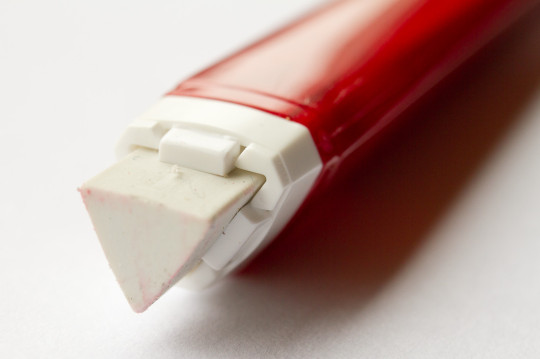Tachikawa School G for Manga 0.2 ~ 0.5
It’s fountain pen day – time for another fountain pen related post.
The pen
This time: the Tachikawa fountain pen, model School G for Manga. It comes with an extremely fine nib which for line widths from 0.2 mm to 0.5 mm. If you think that’s fine – Tachikawa offers an even finer nib as well as version of this pen with sepia coloured ink. Just to help avoid confusion: Tachikawa also has a reputation for making very good flexible nibs for dip pens, one of them is called the G nib, but that’s a different nib. 
The price
I got my Tachikawa pen a few months ago from Fudepens, together with the Pentel Ain Click eraser I wrote about earlier this year and other products. As far as I know Fudepens is only selling the 0.2-0.5 mm version, which costs €7 (~$8.70; £5.50), not the versions with other nibs or ink colours.
The ink
The pen comes with a adivce on a little yellow piece of paper. One of the recommendations suggests using the pen at least once a week. The implication is the “special quick-dry ink” might otherwise clog up the feed. The ink is really black, similar to Indian ink, which is probably why it is easier to clog up the pen.

Writing & line width
As you might have expected – a fountain pen with such a fine nib is rather scratchy. As mentioned earlier the body of the pen suggests a line width of 0.2 mm to 0.5 mm, but when I writing without applying much pressure the line width is not even as wide as that I get from my Faber-Castell Ecco Pigment 0.1 mm fine liner pen. You can vary line width by applying more pressure, but you have to use quiet a bit of pressure (at least with the pen I got) to get a line of ~0.5 mm – so much pressure that you have to write slowly to control the line.
Conclusion
An interesting fountain pen if you want a very fine line. It does produce a very clear line that is easy to see, despite being so exceptionally thin, thanks to it’s blackness. In comparison other black pens, like the Faber-Castell Ecco Pigment 0.1 mm look grey-ish, even though that is not easy to see on my photo, where I compared them on a Black n’Red Polynote A7.

I would like to thank Fudepens.com for the Tachikawa School G for Manga fountain pen, which I got sent for free. I don’t think the fact that I didn’t pay for the pen influenced my opinion of this pen in any way.
Tachikawa School G for Manga 0.2 ~ 0.5 Read More »




